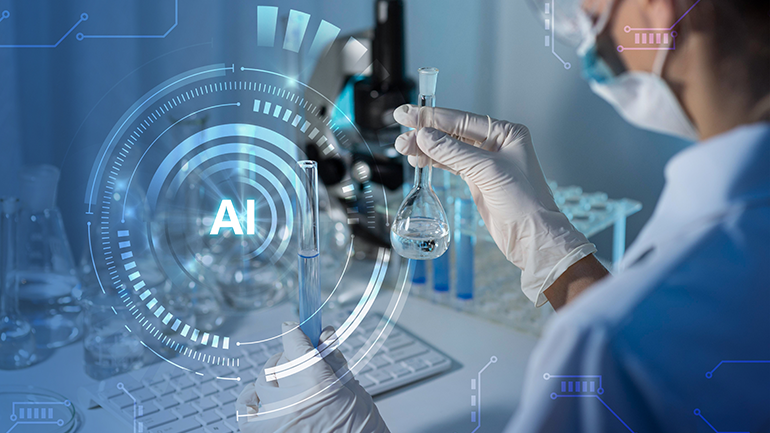
For the past few years, AI has dominated headlines. Tools like Dall-E and ChatGPT/Gemini/Claude sparked excitement, promising to revolutionize entire industries. But as the dust settled, the challenges emerged: hallucinations, governance hurdles, and a reality check. Collectively, we recognized that AI isn’t magic—it’s a tool. And tools are only effective when paired with the right foundation of systems, processes, and people.
So, is AI yesterday’s news? Far from it.
Like most emerging technologies, AI has followed the Gartner Hype Cycle—rising through inflated expectations, dipping into the “trough of disillusionment,” and now beginning its climb toward real, transformational impact.
It’s just getting started—and the life sciences industry has barely scratched the surface of its potential. The hype phase is over, and as we enter 2025, it’s time to start operationalizing AI across enterprises to drive measurable value.
AI isn’t just another technology trend. It’s a defining opportunity for life sciences—stretching across R&D, manufacturing, and commercialization. The organizations that embrace this shift and invest in AI readiness now will lead the industry into its next chapter of innovation.
AI Is the Defining Trend in Life Sciences
AI has the potential to transform how life sciences companies operate, innovate, and deliver value across nearly every facet of their organizations:
- Drug discovery and development: AI is revolutionizing the speed at which new assets—such as drugs, therapies, and biologics—are discovered. These advancements have the potential to bring life-saving therapies to market faster.
- Operational efficiency: Automation powered by AI streamlines supply chains, enhances quality control, and eliminates bottlenecks in manufacturing, boosting productivity while cutting costs.
- Data-driven insights: Life sciences companies generate immense amounts of data—from R&D to commercial functions. AI turns that data into actionable insights, helping leaders make faster, better-informed decisions.
But using AI effectively is about more than just adopting the latest flashy tool. If AI is to deliver on its transformative promise, AI readiness is essential.
AI Readiness: The Missing Link for Life Sciences Adoption
AI readiness isn’t glamorous, but it’s essential. Life sciences organizations that invest in these three areas will be able to integrate AI thoughtfully to create value across the enterprise:
- Clean, governed data
AI models are only as good as the data they’re built on. Life sciences companies must manage vast datasets from R&D, clinical trials, and manufacturing with strict governance and rock-solid data hygiene. Without clean, structured data, AI outputs are unreliable and unusable.
- Scalable systems and processes
Before AI can streamline operations, existing processes need to be well-documented, efficient, and scalable. Enterprise AI integration requires systems that can contextualize data, handle rapid advancements in technology, and scale across global teams.
- People and change management
AI doesn’t replace people; it supports them. Successful adoption depends on training employees, managing organizational change, and ensuring tools enhance—not complicate—existing workflows.
How Stellix Is Leading the Way
At Stellix, we believe that AI success begins with practical, hands-on experimentation and modern implementation strategies. Our approach focuses on two key elements:
Inside-out innovation: testing new technologies internally
We use our own operations as a testing ground for emerging technologies like AI, enabling us to refine tools, processes, and practices before introducing them to customers. This “inside-out” approach ensures real-world applicability while minimizing risk.
Take Stella, our Spot robot dog from Boston Dynamics. By experimenting with Stella in live scenarios, we accelerated our learning curve, identified process improvements, and increased confidence in AI-powered solutions. This hands-on approach helps us deliver AI solutions to customers that are reliable, effective, and proven.
Agile technology adoption: faster time to value
Traditional, linear approaches to technology implementation—like the waterfall method—are too slow for today’s pace of innovation. At Stellix, we embrace Agile, iterative, and proof-of-concept (PoC) approaches to deliver results faster and with greater flexibility.
Are You Ready?
The last two years were about hype and experimentation. Now, the time for operationalizing AI at scale has arrived.
For life sciences companies, AI represents a transformative opportunity that spans drug discovery, manufacturing, and commercialization. The only way to realize this promise is with AI readiness: clean data, scalable systems, and people-first processes.
In 2025, the organizations that embrace this shift will move beyond the trough of disillusionment and begin to realize AI’s full potential.

